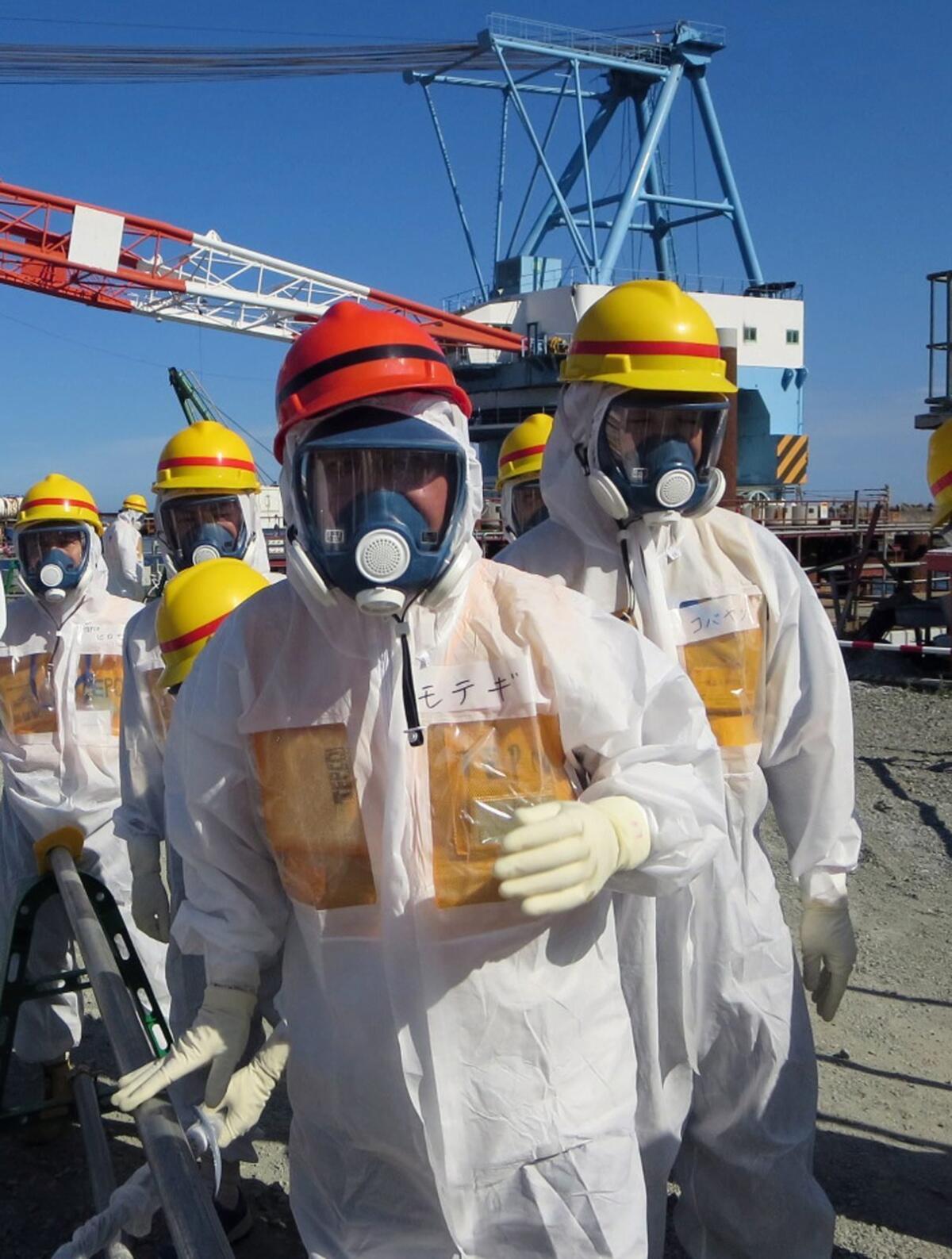Is the Pacific Ocean radioactive? You can help find out

- Share via
As a marine chemist at Woods Hole Oceanographic Institution who has been studying the effects of Japan’s Fukushima reactor leak since right after it happened, Ken Buesseler had long grown frustrated with the repeated scare stories he was seeing online. So he decided to do something about it.
Buesseler is enlisting the public in his cause, giving them an opportunity to share in the research he is doing. Through the Center for Marine and Environmental Radioactivity, Buesseler is crowd-funding an effort to take regular measurements of ocean radiation up and down the West Coast.
The way it works is this: When you sign up, he will send you a sampling kit that will record all of the vital information; you send it back to him for analysis and compilation. It’s not cheap -- each sample costs $550 to $600, including materials, shipping and analysis -- but groups can go in together to help defray the costs.
Already there have been signups from Scripps Pier in San Diego (funded by the Pacific Blue Foundation) to Sequim Bay in Washington. Ideally, Buesseler says, each location will be sampled as often as every other month, giving a long-term picture of exactly how radiation moves through the ocean’s currents.
“It’s been pretty frustrating and I’m trying to figure out how to get science started,” he says. “One measurement at a time isn’t the ideal way to get science going, but it’s a start and it might be a good way to get the public engaged and educated.”
Buesseler was among the first scientists to visit the ocean off Fukushima after the failure of the Daiichi nuclear reactor after the devastating earthquake and tsunami March 11, 2011. His FAQ is generally acknowledged to be among the most reliable sources of scientific information on the spill.
He insists that while the situation continues to be serious in the immediate vicinity of the reactor, fears of ocean-borne radiation on the West Coast of the United States are severely overblown.
But there is a thriving subculture on the Internet that continues to distribute scary material with headlines like “Holy Fukushima -- Radiation From Japan Is Already Killing North Americans” and “28 Signs That the West Coast Is Being Absolutely Fried With Nuclear Radiation From Fukushima.”
“It is still boggling to me that there is this large part of the public that is so scared they’re thinking about moving from the West Coast, that they’re afraid to go swimming in the water and eating the fish,” Buesseler says.
“But it’s also a teachable moment, as we like to say. People need to understand that we live in a world where radiation is everywhere naturally. Radiation can be dangerous -- and I am very concerned about the situation in Japan -- but at the levels we’re expecting here, there’s no reason to be concerned. To stop swimming in the Pacific seems completely unbalanced with the level of danger you might be expecting.”
Buesseler says that no radiation from Fukushima has reached the United States yet, but that we may see levels of some kinds of radiation begin to increase as early as April. At the peak, he predicts that levels of cesium 137, currently at about 1.5 becquerels per cubic meter of ocean water, could reach as high as 30 becquerels. That’s still orders of magnitude lower than the Environmental Protection Agency’s maximum safe level of 7,400 becquerels.
Governments haven’t been much help, Buesseler says, at best assuring the public simply that “everything is under control,” but without really engaging the underlying issues and educating people about radiation and risk.
He hopes public outreach through his measuring program will help to get that started.
“If nobody is making measurements, people can say anything,” he says. “There was a video on YouTube of some guy with a Geiger counter on the beach. He got a high rate of clicks, but that was because of the natural variability in the amount of radiation in beach sand.”
Still, that didn’t stop him from attributing it to Fukushima, and that video got more than 730,000 hits.
“That’s just spreading misinformation, it’s like shouting fire in a crowded theater,” Buesseler says.
ALSO:
Radioactive Fukushima claims live on
Why you shouldn’t buy a peach in January
More to Read
Eat your way across L.A.
Get our weekly Tasting Notes newsletter for reviews, news and more.
You may occasionally receive promotional content from the Los Angeles Times.











